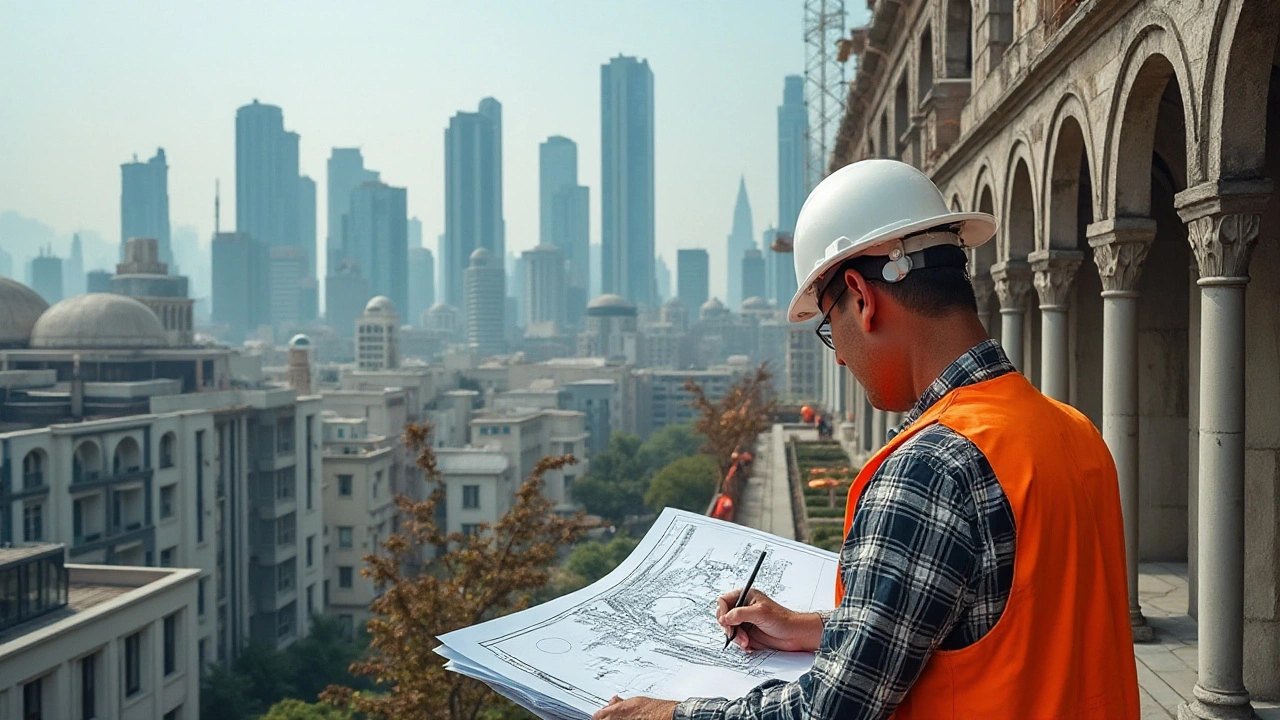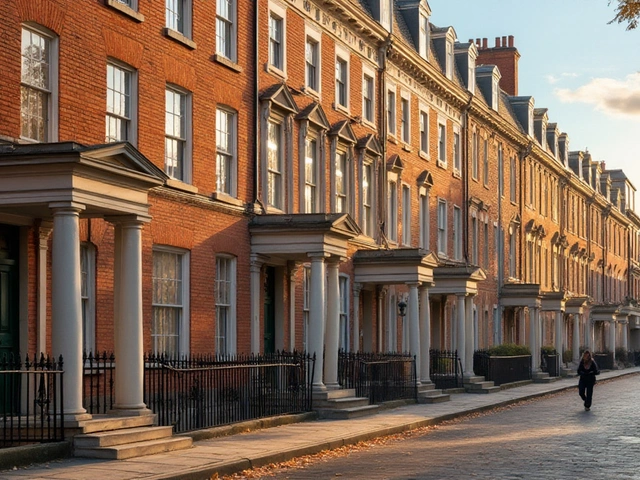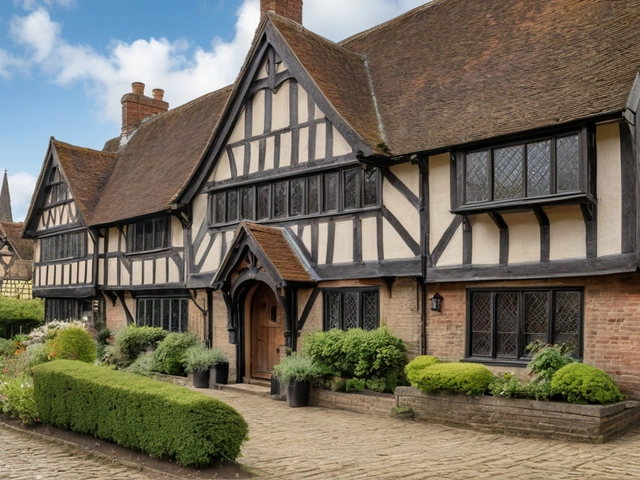Byzantine architecture, an influential style developed during the Eastern Roman Empire, continues to captivate architects and historians alike. Born out of a fusion of Roman and Eastern design elements, it blossomed into a unique form that reflected the grandeur and spiritual aspirations of its time. The lavish use of domes, mosaics, and decorative art forms became synonymous with the Byzantine aesthetic. These structures were not merely buildings but symbols of a thriving civilization and its unwavering faith.
In this exploration, we'll journey through the origins of Byzantine architecture, taking a closer look at its most distinctive features. Along the way, we will highlight iconic examples such as the Hagia Sophia, and discuss its tremendous influence on modern architectural practices. We'll also delve into the cultural and religious significance behind this architectural marvel and examine the ongoing efforts to preserve these historical treasures for future generations.
- The Origins and Development
- Distinctive Features
- Iconic Examples
- Cultural and Religious Significance
- Influence on Modern Architecture
- Preservation Challenges
The Origins and Development
Byzantine architecture arose during a time of significant political and cultural transformation in the Eastern Roman Empire. Around 330 AD, Emperor Constantine the Great moved the capital from Rome to Byzantium, later renamed Constantinople, which marks the beginning of the Byzantine Empire. This relocation was not merely political but also brought a shift in architectural styles, blending Roman engineering and Greek aesthetic with new Christian symbolism.
The earliest examples of Byzantine architecture are rooted in the Roman basilica form, adapted to serve the religious needs of a growing Christian population. The grandiosity of Roman architecture, characterized by large domes, vaults, and arches, found new expression in Byzantine structures. However, it's crucial to note that Byzantine architects introduced innovations that gave their buildings a unique identity. Elements like the central dome, often perched on a square base using a technique called pendentives, became hallmarks of this style, allowing for vast, open interior spaces arcuated by light-filled domes.
One of the pivotal moments in the development of Byzantine architecture came with the construction of the Hagia Sophia in 537 AD. Built under the directive of Emperor Justinian I, the Hagia Sophia exemplified the zenith of Byzantine architectural achievement. Its grand central dome, which seemed to float weightlessly, set a new benchmark. According to the historian Procopius, Justinian exclaimed upon its completion, "Solomon, I have outdone thee!"
Throughout its thousand-year history, Byzantine architecture continued to evolve. Initially, structures often featured plain exteriors with incredibly decorated interiors filled with mosaics and frescoes that depicted Christian iconography. This was a deliberate choice, symbolizing the Christian idea that true beauty lies within. As time passed, ornate facades became more common, especially in later periods, showcasing intricate brickwork and stone carvings.
Another significant development was the spread of Byzantine architectural principles beyond the empire's borders. As Christianity spread, so did the influence of Byzantine architecture. Churches built in regions such as Russia, Greece, and the Balkans during the middle ages reveal distinct Byzantine influences, characterized by their domes and decorative interiors. The iconic onion domes of Russian Orthodox churches are an evolution of the Byzantine dome, adapted to local architectural traditions and climatic needs.
Byzantine architecture is not merely a relic of the past; its principles continue to influence modern design. The emphasis on light, space, and the seamless integration of art and architecture have inspired contemporary architects. Many modern public buildings, especially churches and museums, echo Byzantine design elements, merging ancient techniques with new materials and construction practices.
Distinctive Features
Byzantine architecture is renowned for its exquisite and detailed designs that have fascinated historians and architects for centuries. One of the most defining elements of Byzantine architecture is the extensive use of domes. These domes, often supported by pendentives, allowed for the creation of large, open interior spaces. The Hagia Sophia in Istanbul is perhaps the most famous example, featuring a vast central dome that seems to float above the structure.
The intricate mosaics are another hallmark of Byzantine architecture. These mosaics, often made with gold leaf and brightly colored glass, were more than mere decoration; they told stories from religious texts and depicted renowned saints and figures. Golden hues and elaborate designs aimed to inspire awe and reflect the divine light.
Byzantine buildings also often incorporated a Greek cross plan—a square central mass and four arms of equal length. This layout was particularly common in religious structures and was designed to reflect the perfect and divine form. The cross-in-square plan is a specific variant that became popular in Byzantine church design.
“The art of mosaic is not a mere craft, it's an endeavor to convey divine magnificence, capturing light and essence within a physical medium.” — John Julius Norwich, Historian
Another characteristic is the use of clerestory windows. These high, narrow windows allowed natural light to flood into the interior, enhancing the otherworldly atmosphere of the space. Often adorned with stained glass, they not only illuminated the interiors but also created a dramatic play of light and shadow.
Rich materials and lavish decorations were extensively used. Marble columns, opulent capitals, and inlaid surfaces made Byzantine structures stand out in their splendor. The interiors often had a dualistic approach: the lower sections featured dark marble panels, while the upper sections dazzled with glittering mosaics and frescoes, symbolizing the earth and heaven respectively.
Structural innovations were also a significant part of Byzantine architecture. The introduction of pendentives allowed builders to place a round dome over a square base, a feat unheard of in previous architectural traditions. This breakthrough enabled architects to design imposing and spacious interiors that were previously not possible.
| Element | Description |
|---|---|
| Domes | Large, intricately designed domes often based on pendentives. |
| Mosaics | Elaborate artworks using gold and colored glass to depict religious scenes. |
| Greek Cross Plan | Square central mass with four extending arms of equal length. |
| Clerestory Windows | Narrow high windows that allowed natural light to enhance interior spaces. |
| Rich Materials | Use of marble, gold, and mosaic tiles in decoration. |
Iconic Examples
Byzantine architecture has given the world some of the most and striking structures known to human civilization. One of the most prominent and spectacular examples is the Hagia Sophia in Istanbul, Turkey. Initially constructed as a cathedral during the reign of Emperor Justinian I in 537 AD, it later transformed into a mosque, and then a museum, and is now once again a mosque. The Hagia Sophia stands as a symbol of the Byzantine Empire's grandeur and the architectural ingenuity of the time. Its central dome, which appears to hover as if by a divine miracle, is an engineering marvel. The dome measures 31 meters in diameter and its height reaches up to 55.6 meters, creating a vast, open space that inspires awe.
Another luminous example is the Church of San Vitale in Ravenna, Italy. Completed in the mid-6th century, San Vitale is famed for its stunning mosaics that depict biblical stories and figures with brilliant, intricate detailing. These mosaics have been remarkably preserved and offer an insightful glance into the artistry and religious fervor of the Byzantine period. The central octagonal plan of the church, combined with a complex system of vaults and arches, sets San Vitale apart as a masterpiece of Byzantine architecture.
Equally fascinating is the Monastery of Hosios Loukas in Greece. Founded in the 10th century, it is surrounded by the lush landscapes of Mount Helicon. The monastery consists of two main churches: the Church of the Theotokos and the Katholikon. Both churches showcase splendid mosaic work and frescoes, indicative of the era’s advanced artistic techniques. With its serene surroundings and richly decorated interiors, Hosios Loukas represents the pinnacle of Byzantine monastic architecture.
Another treasure trove of Byzantine architecture is the Basilica of Saint Mark in Venice, Italy. Known for its opulent design and gilded mosaics, Saint Mark's Basilica exemplifies the Venetian-Byzantine style that emerged as a result of Venice’s close ties with the Byzantine Empire. The basilica’s layout is in the shape of a Greek cross, and its interior is adorned with an array of mosaics that cover over 8,000 square meters. These mosaics are not just religious artwork but are also storytelling mediums that offer a visual narrative of biblical events.
"The Hagia Sophia is the epitome of Byzantine architecture and continues to be a symbol of cosmopolitanism and harmony," said Richard Krautheimer, a prominent architectural historian.
Not to be overlooked is the Byzantine-era city of Mystras in Greece. Located near the ancient city of Sparta, Mystras was a center of Byzantine culture and served as a residence for the Despot of the Morea. Today, the ruins of Mystras, including its palace, churches, and monasteries, provide a captivating glimpse into the Byzantine way of life. The Church of Agios Dimitrios within Mystras is particularly noteworthy for its frescoes and dome architecture.
In each of these iconic buildings, the defining characteristics of Byzantine architecture—such as domes, extensive use of mosaics, and elaborate iconography—are evident. They reflect the Byzantine Empire's zeal for religious expression and architectural innovation. These structures not only inspire admiration for their aesthetic beauty but also offer invaluable insights into the cultural and historical context of their time. Through their preservation and continued study, these architectural masterpieces remain a tribute to the enduring legacy of the Byzantine Empire.
Cultural and Religious Significance
Byzantine architecture, characterized by its grand domes and intricate mosaics, holds immense cultural significance. During the reign of the Byzantine Empire, architecture wasn’t just about creating buildings; it was about crafting sacred spaces that reflected the deep spiritual roots of the people. Many structures, like the renowned Hagia Sophia, played a central role in religious ceremonies, contributing to the spiritual life of the community and becoming a symbol of faith. Christians of the time saw these architectural marvels as earthly representations of heavenly glory, a belief that shaped their design and ornamentation.
With the spread of Byzantine artistry, architecture became an instrument for cultural unity and continuity. In regions under Byzantine influence, one could see buildings bearing similar structural designs and ornamentation, underscoring a shared cultural heritage. Churches were not only places of worship but also centers for community gatherings, education, and even social services, effectively making them the heart of everyday life.
The religious significance of Byzantine buildings extended to their interiors, which were adorned with elaborate mosaics depicting biblical scenes and saints. The use of icons and mosaics served as visual narratives that conveyed religious teachings, making them accessible to all, regardless of literacy. This emphasis on visual storytelling can still be seen in Eastern Orthodox churches today.
The grandeur of Byzantine structures also signaled the power and divine favor of the Empire. Emperors and church leaders commissioned massive building projects to demonstrate their prowess and devotion. The construction of Hagia Sophia, for instance, was not just an architectural feat, but a political statement. It embodied the divine wisdom (

Influence on Modern Architecture
While Byzantine architecture emerged centuries ago, its imprint on modern architectural practices is undeniable. The grand domes and intricate details that define this ancient style have served as a wellspring of inspiration for contemporary architects. One can see elements of Byzantine design in numerous modern buildings, where architects have adapted its principles to suit today's aesthetic and functional needs.
At the heart of Byzantine's influence is the iconic dome. Take for instance, the Capitol Building in Washington, D.C. While not a one-to-one replica, the dome's design draws strongly from the techniques pioneered in Byzantium. Modern technology has allowed for greater structural innovations, but the underlying inspiration harks back to the grandeur of Byzantine engineers.
The use of mosaics is another prominent feature that has left a lasting legacy. This art form, characterized by tiny pieces of colored glass or stone arranged to create elaborate images, can be seen in various public and private spaces today. Not just limited to floors and walls, mosaic art now adorns modern cladding and structural elements, highlighting the enduring appeal of these ancient techniques.
"Byzantine architecture stands as a bridge between past and present, inspiring a myriad of forms and functionalities in contemporary designs," noted architectural historian Robert Ousterhout.The transition from Byzantine to modern styles has not just been about aesthetic elements but also functional aspects. The spacious interiors designed for liturgical purposes in Byzantine structures have influenced the design of modern civic and community buildings. The open spaces allow for versatile usage, reflecting Byzantine architects' mastery of spatial dynamics.
Moreover, the emphasis on natural light within Byzantine churches has found its way into modern architectural trends. Today's eco-friendly buildings utilize vast windows and skylights to harness daylight, reducing energy consumption while enhancing the human experience within these spaces. Some contemporary churches and spiritual centers explicitly employ these elements to foster a sense of serenity and divinity within their walls.
One can't ignore the role of Byzantine architecture in shaping academic and cultural institutions. Universities and museums around the world incorporate Byzantine-inspired elements to evoke a sense of history and grandeur. The use of arches, domes, and mosaics in these settings creates an environment where visitors and students can appreciate the rich tapestry of human history.
An interesting modern example can be found in the Hagia Sophia-inspired mosque in Tokyo, Japan. This structure melds traditional Byzantine elements with modern Japanese design principles, showcasing a perfect harmony of past and present. It stands as a tribute to the universality of Byzantine aesthetic principles and their adaptability across cultures and time.
In sum, the influence of Byzantine architecture persists, highlighting the timelessness of its design principles. Whether through grand domes, intricate mosaics, or the strategic use of light and space, elements of this ancient style continue to inspire and shape the built environment around us. It is a testament to the ingenuity of Byzantine architects that their work remains relevant, fascinating, and deeply influential today.
Preservation Challenges
Preserving Byzantine architecture has always been an uphill battle owing to various factors like natural wear, human intervention, and environmental changes. Over centuries, these treasured structures have faced the brunt of earthquakes, floods, and erosion. For instance, the Hagia Sophia, one of the most iconic landmarks, has withstood multiple earthquakes, yet has suffered significant structural damage over time.
Another pressing issue is the toll of urbanization. Modern developments often encroach on historical sites, threatening to overshadow or even destroy them. In some cases, the need for new infrastructure leads to the demolition of ancient buildings. Such was the fate for several smaller Byzantine churches in rapidly growing cities. Restoration efforts can sometimes misfire due to a lack of historical insight or resources, leading to further damage rather than preservation.
Political instability in certain regions also poses a significant concern. Conflicts can result in targeted destruction of cultural heritage sites. The ongoing civil war in Syria has damaged many Byzantine monuments, leaving behind ruins where once stood architectural marvels. As one scholar noted,
“The loss is not just of stone and mortar; it is the erasure of our collective memory.”
Efforts to preserve these structures require international cooperation and a balance between conservation practices and modern development. The United Nations Educational, Scientific and Cultural Organization (UNESCO) plays a critical role in this, often stepping in to designate World Heritage Sites, urging nations to act responsibly. They also provide technical assistance and funding for preservation projects.
Modern technology offers some innovative solutions. 3D scanning and digital reconstructions allow researchers to document and study the fine details of these buildings, offering invaluable data for restoration projects. For example, detailed digital scans of the mosaics in the Church of San Vitale in Ravenna have provided insights that traditional methods could never achieve.
Community Involvement
Local communities play an essential role in preserving cultural heritage. Grassroots efforts often step in where governmental resources may fall short. Volunteers help maintain the sites and raise awareness about the importance of conserving these historical structures. Community-led initiatives like guided tours and educational programs can generate funds for ongoing preservation work.
Still, much work remains. Sustaining the effort to protect and restore these invaluable pieces of our history requires continuous vigilance. Only by promoting an understanding of the cultural and historical significance of these buildings can we hope to ensure their survival for future generations.





